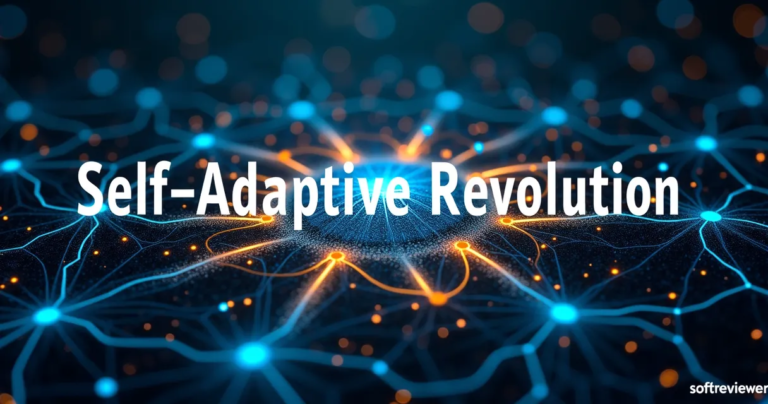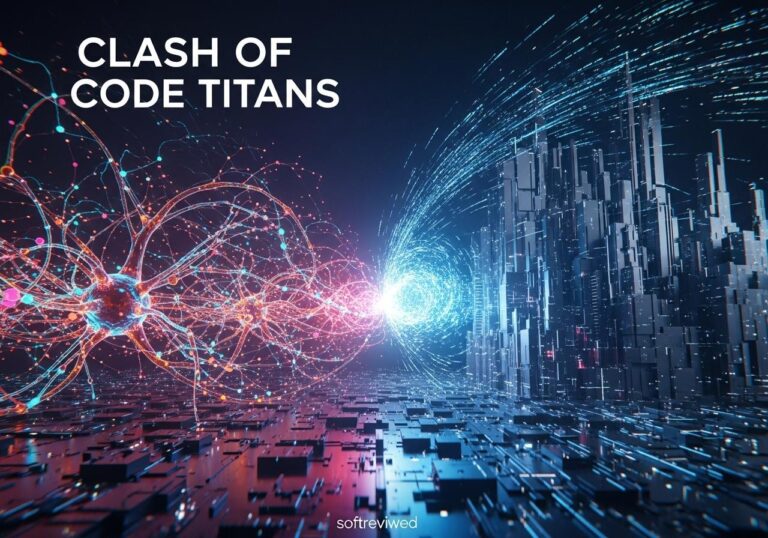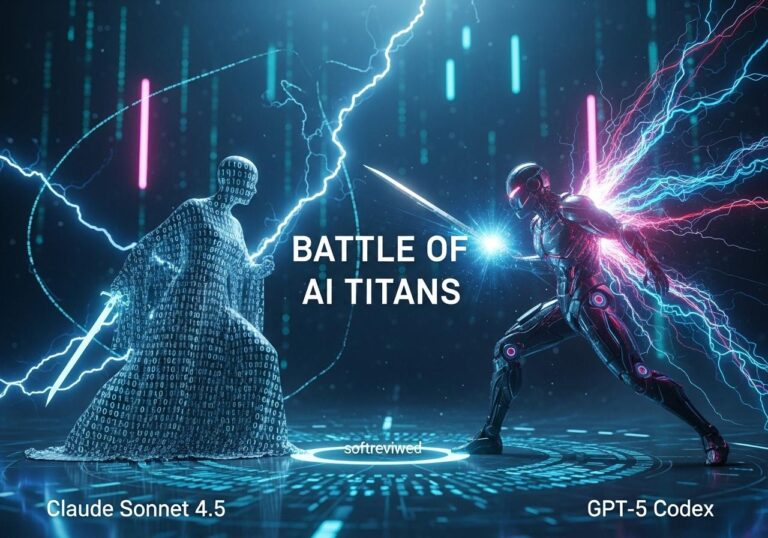Transformer² Technology: Next-Gen AI Adaptation
Revolutionary AI system that dynamically adapts to new tasks without traditional fine-tuning
Dynamic Adaptability
Real-time adjustment of model weights during inference, enabling swift adaptation to unknown tasks without external intervention.
Two-Step Process
Analyzes task requirements first, then dynamically mixes multiple “expert” vectors to generate optimal model behavior.
Singular Value Finetuning
Innovative fine-tuning method that extracts and adjusts singular values in the weight matrix, reducing computational demands.
Cross-Domain Transfer
Transfers learned adaptations across different domains, from language to vision tasks, without additional training.
Efficiency & Scalability
Reduces computational costs and memory requirements compared to traditional methods, making it practical for real-world applications.
Imagine an AI that doesn't just follow pre-programmed instructions but dynamically adapts to new challenges, much like an octopus changing its color to blend into its environment. That's the promise of Transformer², a groundbreaking self-adaptive machine learning framework introduced by Sakana AI. This new system aims to address limitations in current Large Language Models (LLMs), ushering in a new era of flexible and efficient artificial intelligence. Sakana AI's Transformer² is designed to handle diverse tasks by adjusting its internal mechanisms on the fly, marking a significant leap toward more versatile and intelligent systems.
The Problem with Static AI: Why Fine-Tuning Isn't Always Enough
Traditional large language models (LLMs) often require extensive fine-tuning to perform well on specific tasks. This process involves adjusting the model’s parameters based on large datasets related to the desired outcome, and can be computationally demanding and time-consuming. These models are typically static after fine-tuning, meaning they lack the ability to adapt to new or unseen tasks without further, often significant, retraining. 🤔 This rigidity presents a significant challenge in deploying AI solutions in diverse and dynamic real-world scenarios.
Enter Transformer²: A New Paradigm for Adaptable Language Models
Sakana AI's Transformer² takes a radically different approach. Rather than relying on static, pre-trained parameters, Transformer² dynamically adjusts its internal workings based on the task at hand. This self-adaptive capability means the model can analyze incoming tasks and modify its behavior in real-time, optimizing for the specific requirements of each situation. It’s designed to mimic the kind of adaptation seen in nature, allowing for more efficient and flexible AI. This two-step process allows for rapid adjustment and improved performance. 🚀
How Does Transformer² Work Its Magic? Unpacking the Two-Step Process
Transformer² operates using a unique two-step process:
- Task Analysis: The model first analyzes the input to identify the task's nature. This is where the system determines whether it's dealing with a coding problem, a mathematical calculation, a reasoning challenge, or a visual interpretation request. 🧐
- Dynamic Adaptation: Based on this analysis, the model then dynamically adjusts its internal weights by combining "expert" vectors pre-trained for various task categories. These weights influence how the AI processes information and generates responses. This adaptation happens during inference, enabling real-time performance. ✅
Singular Value Fine-tuning (SVF): The Engine Behind Transformer²

At the heart of Transformer² lies a method called Singular Value Fine-tuning (SVF). This technique leverages Singular Value Decomposition (SVD), a mathematical concept that breaks down the model’s weight matrices into essential components. SVD is used to identify the principal components of the LLM's weight matrices. Sakana AI found that enhancing specific components, while suppressing others, improved performance on downstream tasks.
Instead of modifying all parameters, which can be costly and often result in overfitting (where models become too specialized to a training set and don’t generalize well), SVF focuses on fine-tuning the singular values of the weight matrices. This approach reduces the number of parameters that need adjustment, resulting in significant efficiency gains and reduced computational overhead. It’s like performing delicate surgery rather than a complete overhaul. 💡
Expert Vectors: Tailoring AI to Specific Tasks
Through reinforcement learning (RL), SVF creates compact “expert” vectors that are specialized for specific tasks. These vectors act like mini-AI systems pre-trained for a specific domain, and they are combined at inference to create the optimal response for the given query. Imagine having a team of specialists, each an expert in their respective domain (math, coding, reasoning, etc), and the system brings them together when needed to tackle a specific task.
Dynamic Inference: Adapting in Real-Time
During inference, Transformer² employs a dynamic two-pass mechanism. First, the model observes the prompt to understand its requirements. Second, it dynamically integrates the relevant expert vectors, fine-tuned using Singular Value Fine-tuning (SVF) and reinforcement learning, to produce the appropriate behavior. This allows the model to adapt to the specific nuances of the prompt in real-time.
The model uses multiple adaptation strategies for combining expert vectors, including:
- Prompt-based: Using crafted prompts to determine which experts are most relevant.
- Classifier-based: Employing a trained classifier to identify the task.
- Mixture-based: Combining multiple experts based on the identified task to generate a synergistic result.
Transformer² vs. Traditional Fine-Tuning: A Head-to-Head Comparison
| Feature | Transformer² | Traditional Fine-Tuning |
|---|---|---|
| Adaptation | Dynamic, real-time | Static, requires retraining for new tasks |
| Parameter Tuning | Selectively adjusts singular values | Adjusts all or most model parameters |
| Efficiency | More efficient, requires less computation | Computationally intensive |
| Task Handling | Adapts to diverse tasks, handles unseen tasks | Requires specific pre-training for each task |
| Flexibility | High adaptability, self-adapting | Limited flexibility after training |
Real-World Impact: Where Can Transformer² Shine?
Transformer²'s adaptability opens up a wide range of applications:
- Personalized AI Assistants: Adapting to unique user needs and preferences without requiring a full-scale retrain.
- Dynamic Content Creation: Generating text, code, or images tailored to diverse and rapidly changing contexts.
- Multilingual Chatbots: Quickly adapting to new languages and dialects.
- Enhanced AI in Robotics: Allowing robots to dynamically adjust their actions in response to changing environments.
- Improved Visual Question Answering: Performing exceptionally well in tasks that require understanding and reasoning about images.
- Robust AI in Healthcare: Helping to better adapt to new clinical data and cases.
The Adaptive Advantage: Benefits of Transformer²
The unique design of Transformer² offers several significant advantages:
📌 Increased Efficiency: By selectively adjusting singular values rather than all parameters, the model significantly reduces training and inference time.
📌 Enhanced Adaptability: Transformer² can adapt to new tasks and domains in real-time, removing the necessity for resource-intensive retraining.
📌 Improved Generalization: The model’s ability to combine expert vectors improves its performance across multiple tasks and allows the AI to tackle unseen challenges more effectively.
📌 Parameter Efficiency: Using fewer parameters compared to methods like LoRA while achieving higher performance.
📌 Reduced Overfitting: The SVF method with reinforcement learning provides regularization, preventing performance collapse even with limited data.
The Road Ahead: Where Could Self-Adaptive AI Take Us?
The development of Transformer² points toward a world where AI models are no longer static entities. Instead, they evolve and learn continuously, adapting to the complexities of the real world. This capability could revolutionize how we interact with intelligent systems, bringing about a new wave of adaptable AI capable of continuous change and lifelong learning. Imagine AI scaling its own compute power based on the complexity of a given task. 🤔
How Might Understanding GANs Enhance the Development of Self-Adaptive AI like Sakana.ai’s Transformer²?
Understanding the meaning of gan can significantly enhance the development of self-adaptive AI systems, such as Sakana. ai’s Transformer². By leveraging Generative Adversarial Networks, these systems can improve their learning processes, generate more realistic simulations, and adapt to changing environments, ultimately leading to more robust and efficient AI solutions.
The Adaptive AI Shift: A New Era of Intelligent Systems
Transformer² by Sakana AI represents a significant step forward in the quest for truly adaptable AI. Its capacity to dynamically adjust to various tasks, improve efficiency, and enhance performance across diverse applications suggests a transformative approach to machine learning. The technology promises a more flexible, efficient, and versatile class of AI solutions for a wide range of applications. To explore further, check out the official Sakana AI Transformer² page.
Transformer² Performance Metrics vs Traditional Transformers
Comparative analysis showing key performance improvements of Transformer² over traditional transformer models across different metrics.







